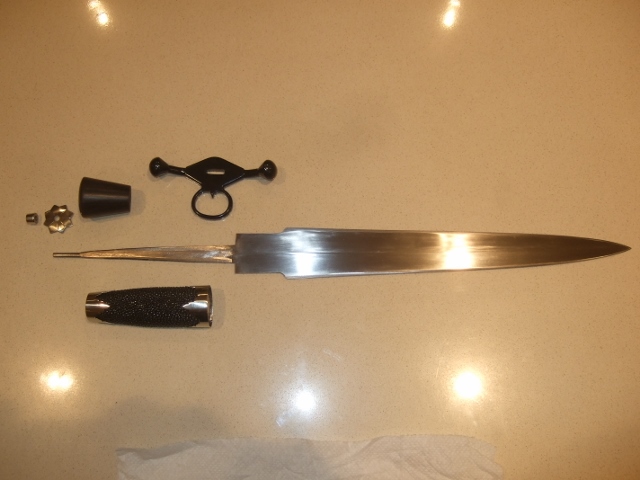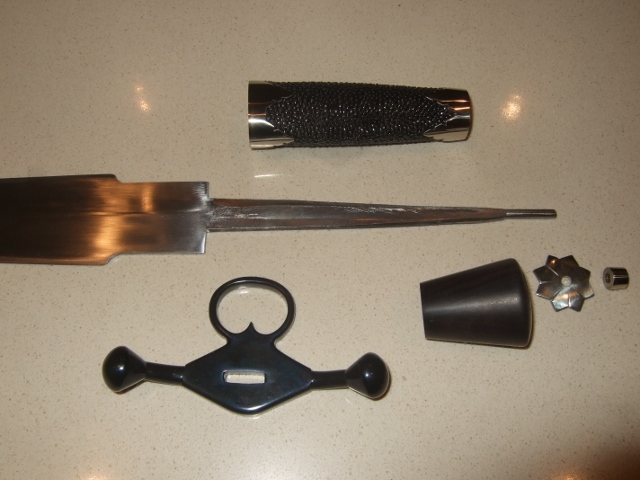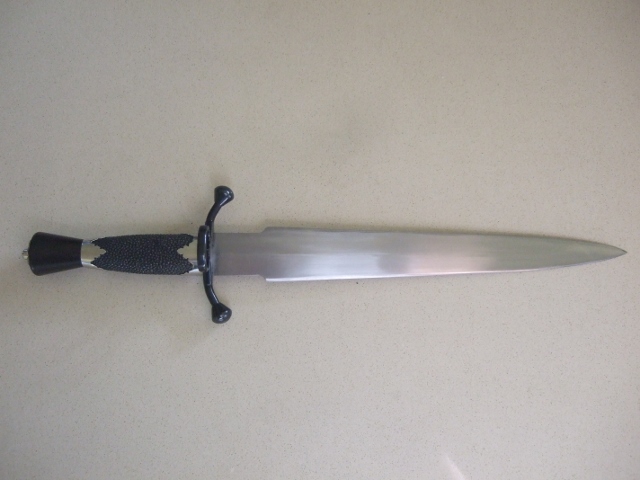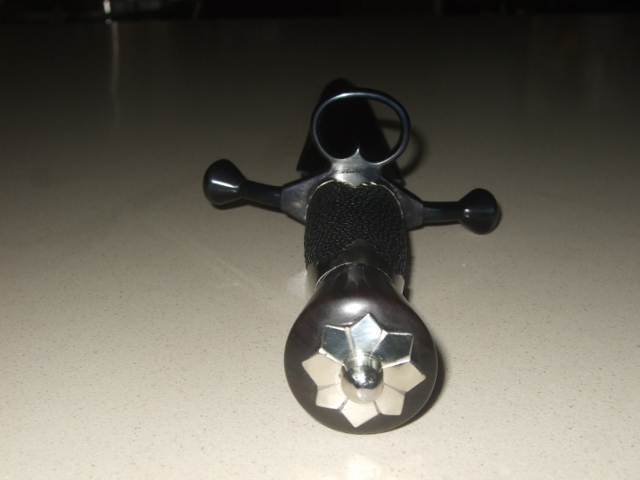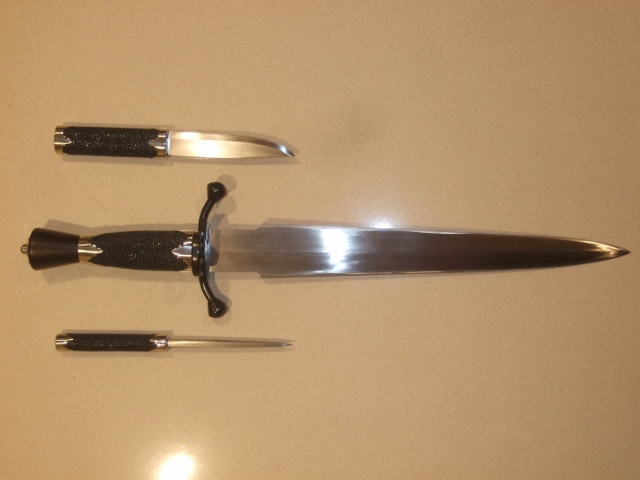decided to post my current project as "work in progress". Almost done with the dagger itself, and will post about the bodkin separately. Need to assemble the dagger, make the by-knife, and of course scabbard (which will probably be as much work as dagger itself).
I got interested lately in so called Landsknecht daggers of their several types, especially the "Saxon" type. First reading some books, and then that dagger of this type that sits in a display case full of Saxon rapiers in the Metropolitan Museum really caught my eye... I spent quite a bit of time at that display bending and squirming around to take a look from odd angles, and took notes for my project. The famous "Catalog of European Daggers" by Bashford Dean helped a lot, too.
Choice of blade was hard. A proper blade for this type of dagger would have to be custom ordered and I didn't want to put that kind of money into an experimental hobby project. In the end, I got a cheap big dagger blade from Atlanta Cutlery ( http://www.atlantacutlery.com/p-923-arkansas-...de-12.aspx ).
It is decent carbon steel, not too hard but tough enough (sort of springy) and takes a good edge. Funny thing is that the tang is MUCH better than the round rat-tail they show. It is actually as wide and solid as one could want. I had to file and bend it a lot to make it straight and centered, though.
I changed the blade profile a little at the base to make it look more "interesting" (have seen some parrying daggers in books with similar profile). Also sharpened the blade (it came unsharpened) and refinished it to 600 grit satin finish.
See the picture of modified blade (along with all prepared parts for the handle) and compare with the original at the above link.
